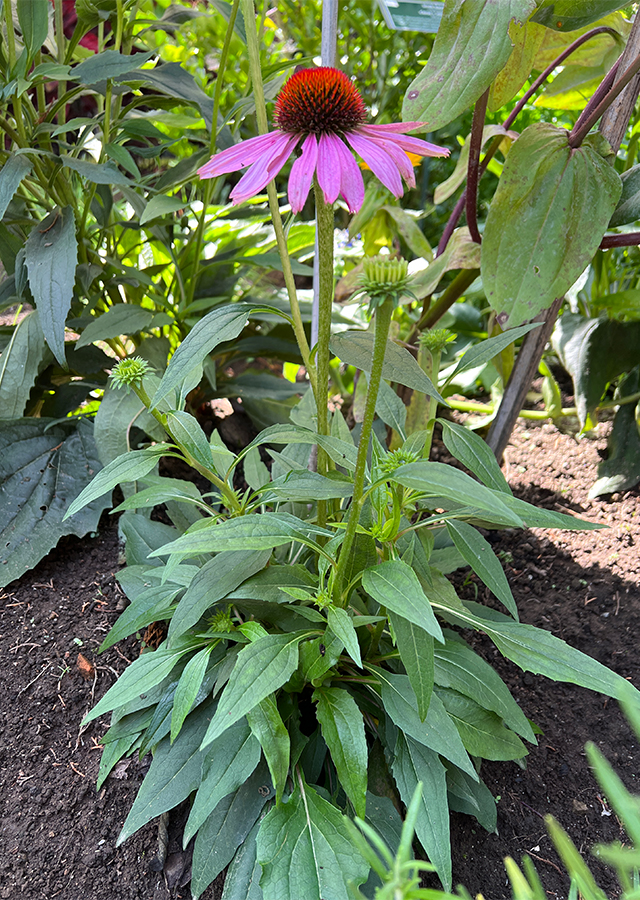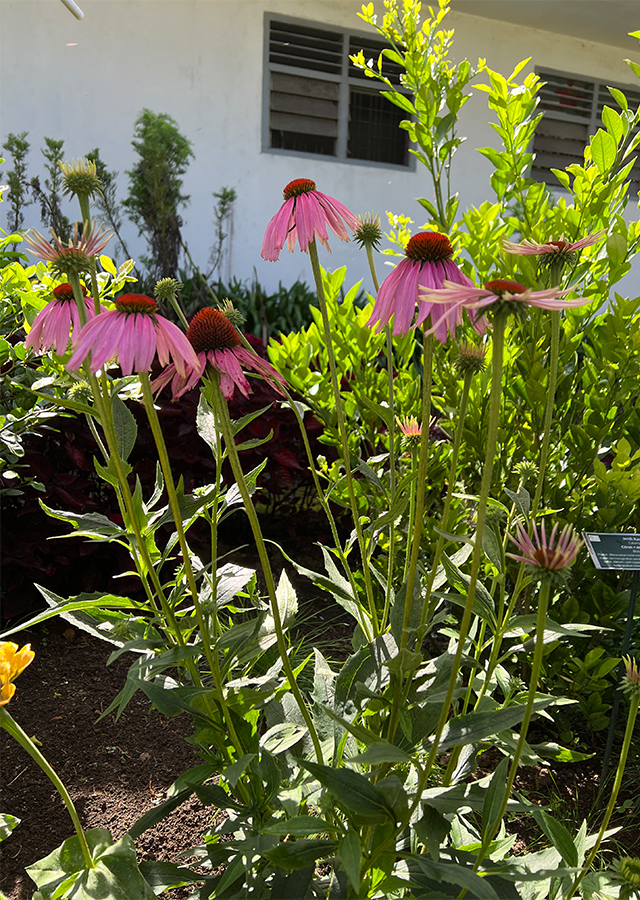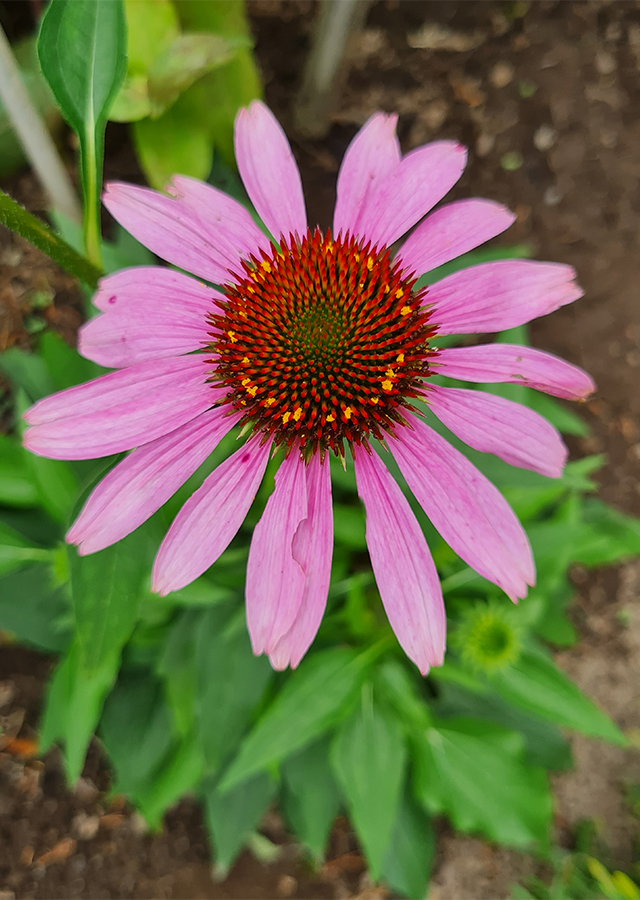Traditional Herbs from Echinacea purpurea
improve_the_immune_system
- Take enough dried purple coneflower flowers, wash them thoroughly.
- Boil the water and the flowers for about 5-10 minutes and wait until they change color.
- When it boils and changes color, drain it for a moment.
- Strain slowly so that the boiled water and dregs are separated.
- Boiled water\u00a0can be consumed warm/hot and can also be added to taste sweeten according to taste.\u00a0
What is Echinacea purpurea Looks like??



Parts of Echinacea purpurea that could be used
- Leaves", "Flowers", "Roots", "Stems", "All Parts of the Plant
Echinacea purpurea Distribution
Echinacea purpurea or Purple coneflower is a flowering plant originating from eastern North America. Generally, it is widely planted by people as an ornamental plant in gardens and parks, and has also been cultivated commercially as a medicinal plant for centuries. The crown strands (petals) can be consumed. It contains good compounds and plays a role in treating various diseases and maintaining health in the body. Echinacea purpurea is generally made as tablet medicine, alcoholic medicine, and extract. It is not uncommon for this plant to be made into tea. Echinacea purpurea has many traditional and modern medical uses. Therefore, many parts of the plant are used for various effects, where the flowers, leaves, stems and roots of the flowers can be used for treatment.Agroecology of Echinacea purpurea
E. purpurea is usually found growing in fields, grasslands and open forests. Grows well in the tropical environment of Indonesia at an altitude of 450 - 1,100 m above sea level. Optimal growth is in full sun and cannot tolerate shade. If shaded, the plant experiences etiolation so it becomes taller. E. purpurea likes sandy or clay textured soil, well-drained, loose, with sufficient water with a soil pH between 5.5 � 7.5. E. purpurea is quite tolerant of drought and damp conditions.
Morphology of Echinacea purpurea
- Fibrous roots.
- Stem erect, branched, brownish green or hairy.
- Leaves single, alternate (alternate), simple, lower leaves wider ovate. Lamina ovate lanceolate to narrow lanceolate, edge serrated, tip of leaf pointed (acute), base of leaf rounded (rounded) to pointed (acute), bracts involucral linear to lanceolate to subglobose, disc florets have greenish to pinkish or purple corolla. Ray floret corolla pinkish-purple, two-toothed at apex, sparsely hairy Cypselae, 3-4-angled, glabrous, brown or bicoloured with distal band is dark brown.
Cultivation of Echinacea purpurea
Plant propagation is generative through seeds or vegetatively by division, root cuttings and basal cuttings.
Echinacea purpurea, more details :
Chemical Content of Echinacea purpureaPolysaccharides, caffeic acid derivatives (caffeic acid, cichoric acid, caftaric acid, chlorogenic acid), phenolic acids, rosmarinic acid, alkamides, isobutylamide, flavonoids and glycoproteins.
Benefits of Echinacea purpurea
Improves the immune system, treats mouth pain and sore throat, urinary tract infections, helps relieve muscle pain, inhibits the growth of cancer cells, relieves anxiety, lowers blood pressure, symptoms of the common cold in adults, treats colds, infections, wounds, boils, skin inflammation, antidote to snake venom. Has antiviral, anti-inflammatory, antioxidant activity.
Simplisia of Echinacea purpurea
- Prepare purple coneflower flowers\u00a0dry as needed, wash until clean.
- Dry in the sun or in an oven at a temperature\u00a040\u00b0C until the water content\u00a010%.
- Choose using a blender until it becomes powder.
- Save in a clean and airtight container.
Another Facts for Echinacea purpurea :
Synonym of Echinacea purpureaBrauneria purpurea (L.) Britton, Echinacea intermedia Lindl. ex Paxton, Helichroa crocea Raf.
Habitus of Echinacea purpurea
Herb. Annual herb, 5-120 cm tall
Habitat of Echinacea purpurea
- Forest
- Roadside
- Grassland
No comments:
Post a Comment